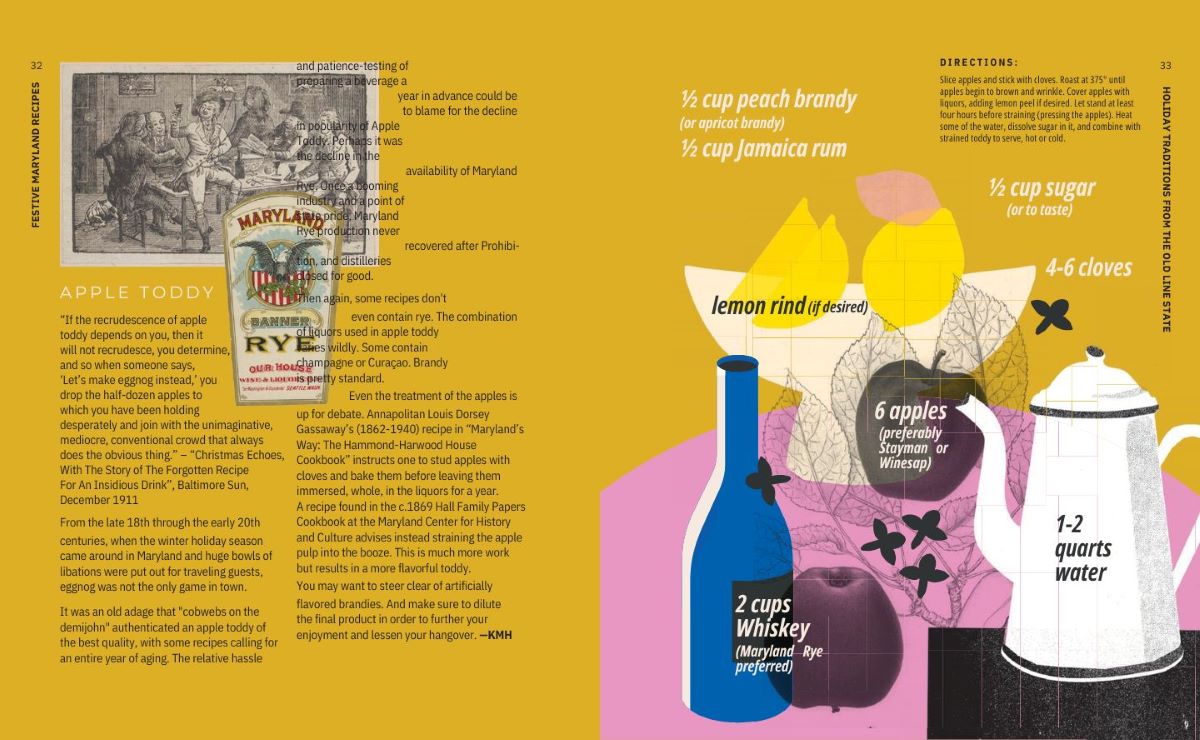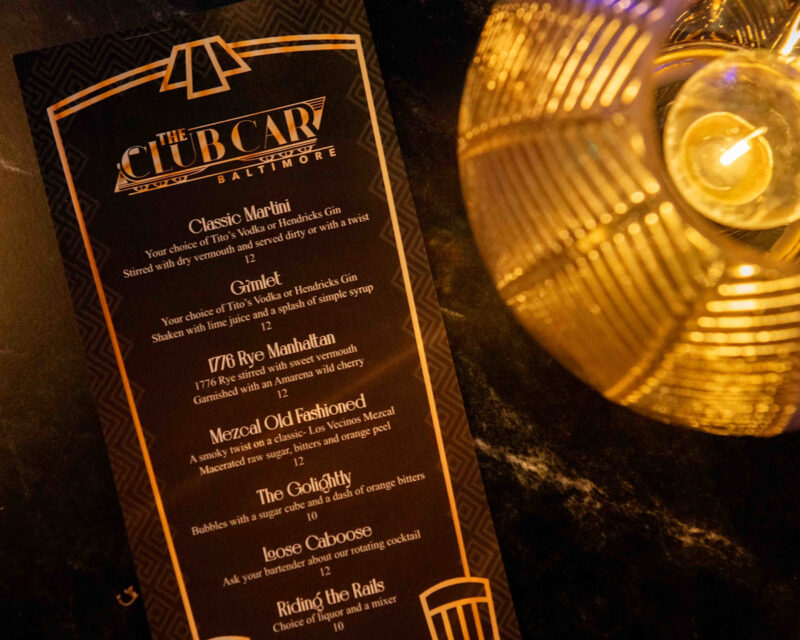Kara Mae Harris, author of Festive Maryland Recipes: Holiday Traditions from the Old Line State, has long been a cookbook connoisseur and collector. “I have around 300-something Maryland cookbooks,” Harris says. “They’re all mostly from Christian congregations or white upper-class churches so I’m so lucky when I can find something different.”
Harris’ cookbook-collecting hobby turned into a blog, Old Line Plate, where she began republishing recipes in 2015. Many of those historical recipes were impossible to recreate. “Historic recipes are really vague,” she explains. “Sometimes they say ‘cook it until it’s done’ or ‘take an egg’s worth of butter’ or ‘a gill of cream and cook in a slow oven.’”
Harris credits the zine SnoBaltimore, by Sara Tomko, as her inspiration for starting Old Line Plate. Started in 2012, SnoBaltimore is a guide to the city’s sno-ball stands. When Harris had the idea to make a zine of her favorite holiday recipes, Tomko was an obvious first choice for a designer. “Last fall I said [to Tomko]…‘How would you feel if the zine turned into a book? How would you feel if that book had a recipe developer? How would you feel if we roped in an illustrator?’”
She connected with Rachel Rappaport, who has been working as a recipe developer since 2004, and has an impressive resume with clients like McCormick and Frank’s RedHot. Rappaport had already updated several of the Baltimore classics, like coddies, smearcase, and peach cake. To Harris’ delight, when she reached out to see if she would be interested in developing recipes for the project, Rappaport said yes.
Harris asked illustrator Ben Classen III, creator of the long-running comic strip “Dirt Farm,” to join the team. “It’s a very rinky-dink project,” Harris describes. “And I’m proud of that fact because everybody who put work into this did it because they believed it would do well.”
The team, though small, was not at all “rinky-dink.” As a self-described hobbyist recipe collector, and amateur food historian, Harris put an incredible amount of time and energy into research. It took her all over Maryland: from the Eastern Shore, down to Saint Michaels, and to the Chesapeake Maritime Museum where she searched photo archives. She credits Digital Maryland, Enoch Pratt Free Library, and several institutions in Maryland as resources for photos and newspaper clippings.
Tomorrow, October 14th at the Enoch Pratt Free Library Central Library, the team will celebrate the result with the launch of Festive Maryland Recipes: Holiday Traditions from the Old Line State.
















